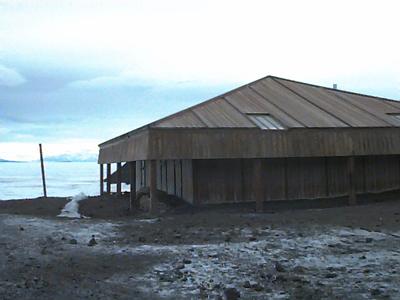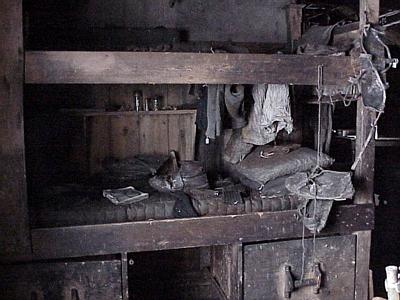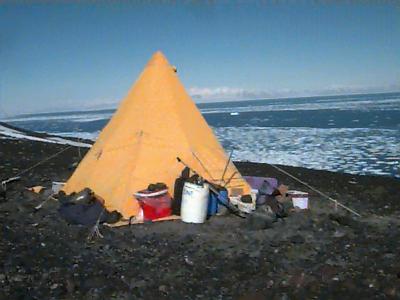
|
|
7 January, 2000
Today David and I flew in to our field camp on Inclusion Hill with the
Coast guard helo. The flight was clear and beautiful. We flew directly
over the Erebus Glacier ice tongue. This is a very interesting
feature. The ice of the glacier moves down the mountain until it
reaches the sea, but the sea is frozen over, so the glacier continues
out on the surface of the ice shelf. This creates a long thin mound of
crevassed ice and debris from high on Mt. Erebus. The ice tongue
extends several miles across the sea ice and is quite dramatic from the
air.
Upon landing, I met Greg and Denise, who have been doing telemetry from
Inclusion hill for nearly 3 weeks. Our camp consisted of one Scott tent
and two smaller mountain tents. The Scott tent was used for the
kitchen and hanging out, while the mountain tents were used for
sleeping. The schedule at Inclusion hill involved three telemetry
sessions each day: One at 8 am, 1 pm and 7 pm. Each session involves
the tracking of about thirty radio tagged Adelies. Each of these
penguins has a tiny transmitter taped to their back. They are tracked
from three locations. The person tracking tunes their receiver to the
frequency of each individual bird, then uses a directional antennae to
locate the direction that the radio signal is coming from. The compass
heading is then recorded, and the time noted. At the same time, the
people at the other two tracking stations try to get a fix on the bird.
With two or even better, three compass bearings on each bird, the
position can be determined. This is done by plotting the compass
headings from each of the three locations on a map. The three headings
should intersect close together. This indicates the location where the
bird is. The characteristics of the actual beeping signal tells us if
the bird is diving or swimming on the surface or perhaps standing on an
ice flow. The signal of a diving bird will disappear for a few minutes
then reappear. Swimming birds tend to fade in and out as they porpoise
along the surface. A bird that is not going under water at all produces
a consistent, clear signal. Radio tracking is a lot of fun when you are
able to pick up the signal. Unfortunately, at least half of the birds
canít be found at a given time. They may be too far away, or in a blind
spot behind an iceberg or something. Since we are high on a hill top
where it is easier to pick up signals, it is very windy at times.
Sometimes it is too windy to go out and do the telemetry session as you
canít hang on to the antenna or sometimes even stand up.

This is The hut used by Scott's expedition to winter over. It looks quite new, though it is all the original materials.



Our camp on Inclusion hill. This was a windy place, but its 1500 foot elevation made it great for telemetry.
Contact the TEA in the field at
.
If you cannot connect through your browser, copy the
TEA's e-mail address in the "To:" line of
your favorite e-mail package.
|
